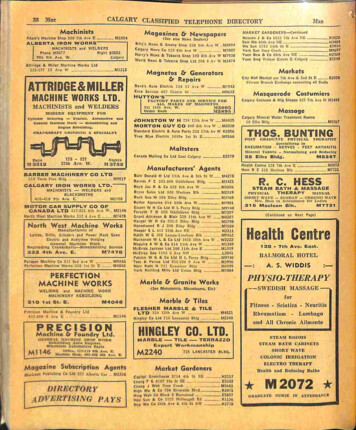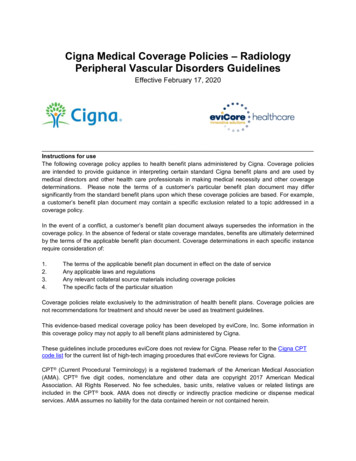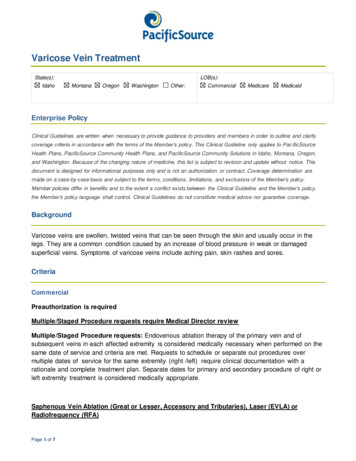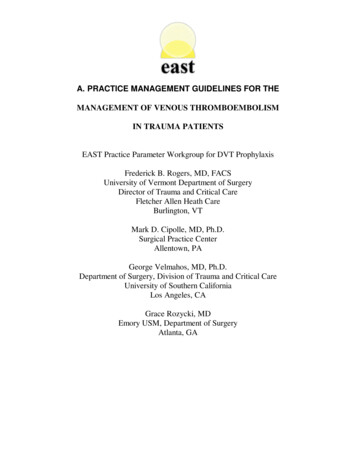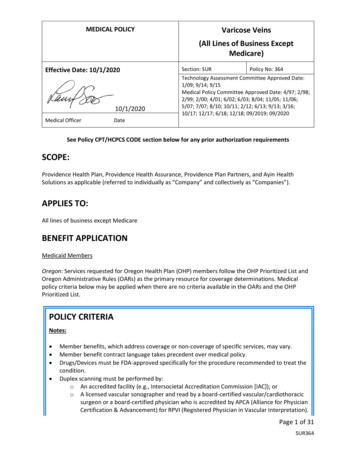
Transcription
MEDICAL POLICYVaricose Veins(All Lines of Business ExceptMedicare)Effective Date: 10/1/202010/1/2020Medical OfficerSection: SURPolicy No: 364Technology Assessment Committee Approved Date:1/09; 9/14; 9/15Medical Policy Committee Approved Date: 4/97; 2/98;2/99; 2/00; 4/01; 6/02; 6/03; 8/04; 11/05; 11/06;5/07; 7/07; 8/10; 10/11; 2/12; 6/13; 9/13; 3/16;10/17; 12/17; 6/18; 12/18; 09/2019; 09/2020DateSee Policy CPT/HCPCS CODE section below for any prior authorization requirementsSCOPE:Providence Health Plan, Providence Health Assurance, Providence Plan Partners, and Ayin HealthSolutions as applicable (referred to individually as “Company” and collectively as “Companies”).APPLIES TO:All lines of business except MedicareBENEFIT APPLICATIONMedicaid MembersOregon: Services requested for Oregon Health Plan (OHP) members follow the OHP Prioritized List andOregon Administrative Rules (OARs) as the primary resource for coverage determinations. Medicalpolicy criteria below may be applied when there are no criteria available in the OARs and the OHPPrioritized List.POLICY CRITERIANotes: Member benefits, which address coverage or non-coverage of specific services, may vary.Member benefit contract language takes precedent over medical policy.Drugs/Devices must be FDA-approved specifically for the procedure recommended to treat thecondition.Duplex scanning must be performed by:o An accredited facility (e.g., Intersocietal Accreditation Commission [IAC]); oro A licensed vascular sonographer and read by a board-certified vascular/cardiothoracicsurgeon or a board-certified physician who is accredited by APCA (Alliance for PhysicianCertification & Advancement) for RPVI (Registered Physician in Vascular Interpretation).Page 1 of 31SUR364
MEDICAL POLICYVaricose Veins(All Lines of Business ExceptMedicare) See policy description section for the clinical, etiologic, anatomic, and pathophysiologic (CEAP)clinical findings classification (Table. 1), venous nomenclature (Table. 2), and associatedterminology (Table. 3).Documentation Requirements:Services may be denied if the following documentation is not submitted with the priorauthorization request. All of the following is required: Color photos (clear and interpretable quality)Complete duplex studies including vein names with measurements of seconds of reflux andaverage vein diameters. According to the Intersocietal Accreditation Commission, a completevenous study includes the following:o Deep veins: common femoral, mid-femoral, and poplitealo Long saphenous vein: SFJ, mid-thigh, knee, and mid-calfo Short saphenous vein: SPJ, and mid-calfo Perforators: site with seconds of reflux and diameterso Branch tributaries: site with seconds of reflux and diameterso Varicose veins (varices): diametersComplete medical history and physical examination, including the specific activities of dailyliving impaired, and how this affects daily and/or occupational functionIf required per medical necessity criteria, the conservative therapy treatment plan and theresults of this therapy.The procedure requested, including:o Specific veins to be treatedo Number of treatment sessions being ision/stripping of the great saphenous vein (GSV), small saphenous veins (SSV), oranterior accessory saphenous vein (AASV) for the treatment of symptomatic varicose veins maybe considered medically necessary and covered when at least one of the following criteria (A.C.) are met:A. The patient is experiencing itching, discomfort, or heaviness in the leg(s) due to a varicosityconfirmed by physical examination, and meets all of the following (1.-4.) criteria:1. The patient’s symptoms interfere with instrumental activities of daily living (e.g.,bathing, feeding, household duties, and/or job activities); and2. The patient’s symptoms persist after conservative therapy for at least 6 weeks (e.g.,exercise, leg elevation, and/or compressive therapy); and3. Superficial venous reflux 500 milliseconds as measured by duplex ultrasound (US);and4. Endovenous intervention (e.g., ablation) is not feasible; orPage 2 of 31SUR364
MEDICAL POLICYVaricose Veins(All Lines of Business ExceptMedicare)B. The patient has been diagnosed with a superficial thrombophlebitis, and meets both of thefollowing (1. and 2.) criteria:1. The patient is continuing to experience thrombophlebitis after treatment with at leastone of the following (a.-c.):a. NSAIDs or acetaminophen for at least 3 weeks; orb. Low molecular weight heparin (LMWH) for at least 6 weeks; orc. Fondaparinux for at least 6 weeks; and2. Endovenous intervention (e.g., ablation) is not feasible; orC. The patient is experiencing a significant hemorrhage or recurrent bleeding from asuperficial varicosity and endovenous intervention (e.g., ablation) is not feasible.II.Ligation/excision/stripping is considered not medically necessary and is not covered whencriterion I. above is not met.Subfascial Endoscopic Perforating Vein Surgery (SEPS)III. Subfascial Endoscopic Perforating Vein Surgery (SEPS) for the treatment of incompetentperforator veins may be considered medically necessary and covered when all of the following(A.-C.) criteria are met:A. Venous reflux 500 milliseconds; andB. Vein diameter 3.5 millimeters; andC. Located beneath an active or healed venous ulcer.IV. Subfascial Endoscopic Perforator Vein Surgery (SEPS) is considered not medically necessaryand is not covered when criterion III. above is not met.Ambulatory PhlebectomyV. Ambulatory phlebectomy for the treatment of symptomatic varicose veins may be consideredmedically necessary and covered when at least one of the following (A.-C.) criteria are met:A. The patient is experiencing itching, discomfort, or heaviness in legs due to a varicosityconfirmed by physical examination, and meets all of the following (1.-5.) criteria:1. The patient’s symptoms interfere with instrumental activities of daily living (e.g.,bathing, feeding, household duties, and/or job activities); and2. The patient’s symptoms persist after conservative therapy for at least 6 weeks (e.g.,exercise, leg elevation, and/or compressive therapy); and3. Superficial venous reflux 500 milliseconds as measured by duplex ultrasound (US);and4. There is associated superficial venous incompetence of the greater saphenous vein,small saphenous vein, and/or anterior accessory saphenous vein; andPage 3 of 31SUR364
MEDICAL POLICYVaricose Veins(All Lines of Business ExceptMedicare)5. The ambulatory phlebectomy procedure is performed with saphenous vein ablation,either concurrently or at a later stage; orB. The patient has been diagnosed with a superficial thrombophlebitis that is refractory to atleast one of the following (1.-3.) treatments:1. NSAIDs or acetaminophen for at least 3 weeks; or2. Low molecular weight heparin (LMWH) for at least 6 weeks; or3. Fondaparinux for at least 6 weeks; orC. The patient is experiencing a significant hemorrhage or recurrent bleeding from asuperficial varicosity.VI. Ambulatory phlebectomy is considered not medically necessary and is not covered whencriterion. V above is not met.Endovenous Ablation (Laser or Radiofrequency)VII. Endovenous ablation (laser or radiofrequency) of the great saphenous vein (GSV), smallsaphenous veins (SSV), or anterior accessory saphenous vein (AASV) for the treatment ofchronic venous insufficiency may be considered medically necessary and covered when atleast one of the following (A.-E.) criteria are met:A. The patient has an active venous ulcer and both of the following (1. and 2.) criteria are met:1. Venous reflux is 500 milliseconds as measured by duplex ultrasound (US); and2. The venous ulcer is refractory to at least 6 weeks of wound care with dressing and atleast 6 weeks of compression hose (20 to 30 mmHg); orB. The patient has a healed venous ulcer and venous reflux is 500 milliseconds as measuredby duplex ultrasound (US); orC. The patient has been diagnosed with lipodermatosclerosis that is refractory to compressionhose for at least 6 weeks and saphenous vein reflux is 500 milliseconds as measured byduplex ultrasound (US); orD. The patient has been diagnosed with lipodermatosclerosis and perforator vein reflux is 500 milliseconds as measured by duplex ultrasound and a saphenous reflux procedure isplanned; orE. The patient has lower limb edema or pigmentation or eczema and both of the following (1.and 2.) criteria are met:1. Superficial vein reflux 500 milliseconds as measured by duplex ultrasound (US); and2. The symptoms are refractory to all of the following (a.-c.) treatments:a. Compression hose (20 to 30 mmHg) for at least six weeks; andb. Physical therapy or home exercise for at least 6 weeks; andc. Leg elevation for at least 6 weeks.VIII. Endovenous ablation (laser or radiofrequency) of the great saphenous vein (GSV), smallsaphenous veins (SSV), or anterior accessory saphenous vein (AASV) for the treatment ofPage 4 of 31SUR364
MEDICAL POLICYVaricose Veins(All Lines of Business ExceptMedicare)symptomatic varicose veins may be considered medically necessary and covered when atleast one of the following (A.-C.) criteria are met:A. The patient is experiencing itching, discomfort, or heaviness in legs due to a varicosityconfirmed by physical examination, and meets all of the following (1.-3) criteria:1. The patient’s symptoms interfere with instrumental activities of daily living (e.g.,bathing, feeding, household duties, and/or job activities); and2. The patient’s symptoms persist after conservative therapy for at least 6 weeks (e.g.,exercise, leg elevation, and/or compressive therapy); and3. Superficial venous reflux 500 milliseconds as measured by duplex ultrasound (US); orB. The patient has been diagnosed with a superficial thrombophlebitis that is refractory to atleast one of the following (1.-3.) treatments:1. NSAIDs or acetaminophen for at least 3 weeks; or2. Low molecular weight heparin (LMWH) for at least 6 weeks; or3. Fondaparinux for at least 6 weeks; orC. The patient is experiencing a significant hemorrhage or recurrent bleeding from asuperficial varicosity.IX. Endovenous ablation (laser or radiofrequency) for the treatment of recurrent or residualsuperficial venous reflux of the great saphenous vein (GSV) or small saphenous vein (SSV) maybe considered medically necessary and covered when criteria VII. or VIII. above is met.X.Endovenous ablation (laser or radiofrequency) for the treatment of a known anatomicalduplicate of the greater saphenous vein may be considered medically necessary and coveredwhen criterion VII. or VIII. above is met.XI. Endovenous ablation (laser or radiofrequency) for the treatment of perforator veinincompetence is considered medically necessary and covered when all of the following (A.-C.)criteria are met:A. Venous reflux 500 milliseconds as measured by duplex ultrasound (US); andB. Vein size 3.5 millimeters; andC. Located underneath an active or healed venous ulcer.XII. Endovenous ablation (laser or radiofrequency) is considered not medically necessary and isnot covered when criteria V., VI, VII., VIII., IX., X., or XI. above is not met.XIII. Repeat venous studies using duplex ultrasound following endovenous ablation may beconsidered medically necessary and covered when performed within one week of the ablationprocedure.Page 5 of 31SUR364
MEDICAL POLICYVaricose Veins(All Lines of Business ExceptMedicare)SclerotherapyXIV. Foam sclerotherapy (i.e., Varithena ) of the greater saphenous vein (GSV), small saphenousvein (SSV), or anterior accessory saphenous vein (AASV) for the treatment of chronic venousinsufficiency may be considered medically necessary and covered when at least one of thefollowing (A.-E.) criteria are met:A. The patient has an active venous ulcer and both of the following (1. and 2.) criteria are met:1. Venous reflux is 500 milliseconds as measured by duplex ultrasound (US); and2. The venous ulcer is refractory to at least 6 weeks of wound care with dressing and atleast 6 weeks of compression hose; orB. The patient has a healed venous ulcer and venous reflux is 500 milliseconds as measuredby duplex ultrasound (US); orC. The patient has been diagnosed with lipodermatosclerosis and both of the following (1.and 2.) criteria are met:1. The symptoms are refractory to compression hose for at least 6 weeks; and2. Saphenous vein reflux is 500 milliseconds as measured by duplex ultrasound (US); orD. The patient has lower limb edema or pigmentation or eczema and both of the following (1.and 2.) criteria are met:1. Venous reflux 500 milliseconds as measured by duplex ultrasound; and2. The symptoms are refractory to all of the following (a.-c.) treatments:a. Compression hose for at least six weeks; andb. Physical therapy or home exercise for at least 6 weeks; andc. Leg elevation for at least 6 weeks.XV. Foam sclerotherapy (i.e., Varithena ) of the greater saphenous vein (GSV), small saphenousvein (SSV), or anterior accessory saphenous vein (AASV) for the treatment of symptomaticvaricose veins may be considered medically necessary and covered when at least one of thefollowing (A.-B.) criteria are met:A. The patient is experiencing itching, discomfort, or heaviness in legs due to a varicosityconfirmed by physical examination, and meets all of the following (1.-3) criteria:1. The patient’s symptoms interfere with instrumental activities of daily living (e.g.,bathing, feeding, household duties, and/or job activities); and2. The patient’s symptoms persist after conservative therapy for at least 6 weeks (e.g.,exercise, leg elevation, and/or compressive therapy); and3. Superficial venous reflux 500 milliseconds as measured by duplex ultrasound (US); orB. The patient is experiencing a significant hemorrhage or recurrent bleeding from asuperficial varicosity.XVI. Foam sclerotherapy (i.e., Varithena ) for the treatment of recurrent or residual symptomaticchronic venous disease may be considered medically necessary and covered when both of thefollowing (A. and B.) criteria are met:Page 6 of 31SUR364
MEDICAL POLICYVaricose Veins(All Lines of Business ExceptMedicare)A. The patient has had a prior saphenous vein procedure; andB. Criterion XIV. or XV. above are met.XVII. Foam sclerotherapy (i.e., Varithena ) for the treatment of incompetent perforator veins isconsidered medically necessary and covered when all of the following (A.-C.) criteria are met:A. Venous reflux 500 milliseconds as measured by duplex ultrasound (US); andB. Vein diameter of 3.5 millimeters; andC. Located underneath an active or healed venous ulcer.XVIII. Foam sclerotherapy (i.e., Varithena ) is considered not medically necessary and is notcovered when criteria XIV., XV., XVI., or XVII. above is not met.Not Medically Necessary TreatmentsXIX. Transilluminated powered phlebectomy is considered not medically necessary and is notcovered for any indication, including, but not limited to, chronic venous insufficiency orvaricose veins.XX. Repeat venous studies using duplex ultrasound (with the exception of criterion XIII.) within 6months of the most recent treatment in the absence of new symptoms is considered notmedically necessary and is not covered.Note: Repeat venous studies using duplex ultrasound within one week following endovenousablation may be considered medically necessary. See criterion XIII. above.Investigational TreatmentsXXI.Mechanochemical Endovenous Ablation (MOCA) is considered investigational and is notcovered for any indication, including, but not limited to, chronic venous insufficiency orvaricose veins.XXII. Cryoablation (i.e., cryostripping or cryofreezing) is considered investigational and is notcovered for any indication, including, but not limited to, chronic venous insufficiency orvaricose veins.XXIII. Endovascular embolization with a cyanoacrylate adhesive (e.g., VenaSeal ) is consideredinvestigational and is not covered for any indication, including, but not limited to, chronicvenous insufficiency or varicose veins.Cosmetic TreatmentsXXIV. Any treatment of telangiectasias or reticular veins is considered cosmetic and is notcovered.Page 7 of 31SUR364
MEDICAL POLICYVaricose Veins(All Lines of Business ExceptMedicare)XXV. Treatment of asymptomatic varicose veins is considered cosmetic and is not covered.XXVI. Liquid sclerotherapy (i.e., Asclera ) is considered cosmetic and is not covered.XXVII. Photothermal sclerosis (i.e., intense pulsed light source)(e.g., PhotoDerm Vasculight) isconsidered cosmetic and is not covered.BILLING GUIDELINES There is no specific CPT code to report foam sclerotherapy; therefore, this procedure might be billedwith codes for sclerotherapy (36470, 36471, S2202) or the unlisted vascular procedure code(37799).There is no specific CPT code to report stab phlebectomy of varicose veins, one extremity; less than10 incisions. Therefore, this procedure might be billed with the unlisted vascular procedure code(37799).Duplex Scanning The CPT codes for duplex scanning (93970 or 93971) may be billed in conjunction with varicose veintreatment codes.Duplex scanning must be performed by an accredited vascular lab (e.g., Intersocietal AccreditationCommission [IAC] or American College of Radiology [ACR]).Session Limits Phlebectomy (CPT Codes: 37765, 37766, or 37799) following an ablation procedure is limited to 1billable procedure per leg 6 months from the initial ablation procedure.Sclerotherapy (CPT Codes: 36470, 36471, S2202, or 37799) following an ablation procedure islimited to 1 billable procedure per leg 6 months from the initial ablation procedure.CPT/HCPCS CODESAll Lines of Business Except MedicarePrior Authorization Required3770037718LigationLigation and division of long saphenous vein at saphenofemoral junction, or distalinterruptionsLigation, division, and stripping, short saphenous veinPage 8 of 31SUR364
MEDICAL POLICYVaricose Veins(All Lines of Business S2202Ligation, division, and stripping, long (greater) saphenous veins from saphenofemoraljunction to knee or belowLigation and division and complete stripping of long or short saphenous veins withradical excision of ulcer and skin graft and/or interruption of communicating veins oflower leg, with excision of deep fasciaLigation and division of short saphenous vein at saphenopopliteal junction (separateprocedure)Ligation, division, and/or excision of varicose vein cluster(s), 1 legSubfascial Endoscopic Perforator Surgery (SEPS)Vascular endoscopy, surgical, with ligation of perforator veins, subfascial (SEPS)Ligation of perforator veins, subfascial, radical (Linton type), including skin graft, whenperformed, open,1 legLigation of perforator vein(s), subfascial, open, including ultrasound guidance, whenperformed, 1 legPhlebectomyStab phlebectomy of varicose veins, 1 extremity; 10-20 stab incisionsStab phlebectomy of varicose veins, 1 extremity; more than 20 incisionsEndovenous Laser AblationEndovenous ablation therapy of incompetent vein, extremity, inclusive of all imagingguidance and monitoring, percutaneous, laser; first vein treatedEndovenous ablation therapy of incompetent vein, extremity, inclusive of all imagingguidance and monitoring, percutaneous, laser; subsequent vein(s) treated in a singleextremity, each through separate access sites (List separately in addition to code forprimary procedure)Endovenous Radiofrequency AblationEndovenous ablation therapy of incompetent vein, extremity, inclusive of all imagingguidance and monitoring, percutaneous, radiofrequency; first vein treatedEndovenous ablation therapy of incompetent vein, extremity, inclusive of all imagingguidance and monitoring, percutaneous, radiofrequency; subsequent vein(s) treated ina single extremity, each through separate access sites (List separately in addition tocode for primary procedure)SclerotherapyInjection of non-compounded foam sclerosant with ultrasound compressionmaneuvers to guide dispersion of the injectate, inclusive of all imaging guidance andmonitoring; single incompetent extremity truncal vein (eg, great saphenous vein,accessory saphenous vein)Injection of non-compounded foam sclerosant with ultrasound compressionmaneuvers to guide dispersion of the injectate, inclusive of all imaging guidance andmonitoring; multiple incompetent truncal veins (eg, great saphenous vein, accessorysaphenous vein), same legInjection of sclerosing solution; single veinInjection of sclerosing solution; multiple veins, same legEchosclerotherapyPage 9 of 31SUR364
MEDICAL POLICYVaricose Veins(All Lines of Business ExceptMedicare)Not Covered: Cosmetic36468Single or multiple injections of sclerosing solutions, spider veins (telangiectasia), limbor trunkNot Covered: Investigational0524T36473364743648236483Endovenous catheter directed chemical ablation with balloon isolation of incompetentextremity vein, open or percutaneous, including all vascular access, cathetermanipulation, diagnostic imaging, imaging guidance and monitoringEndovenous ablation therapy of incompetent vein, extremity, inclusive of all imagingguidance and monitoring, percutaneous, mechanochemical; first vein treatedEndovenous ablation therapy of incompetent vein, extremity, inclusive of all imagingguidance and monitoring, percutaneous, mechanochemical; subsequent vein(s)treated in a single extremity, each through separate access sites (List separately inaddition to code for primary procedure)Endovenous ablation therapy of incompetent vein, extremity, by transcatheter deliveryof a chemical adhesive (eg, cyanoacrylate) remote from the access site, inclusive of allimaging guidance and monitoring, percutaneous; first vein treatedEndovenous ablation therapy of incompetent vein, extremity, by transcatheter deliveryof a chemical adhesive (eg, cyanoacrylate) remote from the access site, inclusive of allimaging guidance and monitoring, percutaneous; subsequent vein(s) treated in a singleextremity, each through separate access sites (List separately in addition to code forprimary procedure)Unlisted CodesAll unlisted codes will be reviewed for medical necessity, correct coding, and pricing at theclaim level. If an unlisted code is billed related to services addressed in this policy thenprior-authorization is required.3629937799J3490Unlisted procedure, vascular injectionUnlisted procedure, vascular surgery (Note: May be used to bill for foam sclerotherapyor stab phlebectomy; 10 incisions. See Billing Guidelines for more information.Unclassified drugsDESCRIPTIONChronic Venous DiseaseAccording to UpToDate, “chronic venous disease is a common disorder that affects the veins of thelegs normal veins have a series of valves that open and close to direct blood flow from the surface ofthe legs to the deep leg veins, from which calf muscles pump blood back to the heart. If the valveswithin the veins fail to work properly, there is a blockage to normal flow, or the calf muscles cannotpump properly, blood can flow backwards in the veins and pool in the legs.”1 This pooling of blood cancause mild symptoms, such as itchiness, aching, heaviness in the legs, or dilated veins (e.g., varicoseveins), to more severe symptoms, such as swelling of the legs, ankles, or feet, skin color changes,Page 10 of 31SUR364
MEDICAL POLICYVaricose Veins(All Lines of Business ExceptMedicare)eczema, and chronic ulcers. Patients who develop these more severe symptoms are said to have chronicvenous insufficiency.Chronic venous disease is commonly caused by a blood clot that blocks blood flow, a leg injury orsurgery, excess weight or weight gain, and/or standing or sitting for too long. A physical exam andduplex ultrasound is used to diagnose chronic venous disease. Disease management involves “reducingsymptoms, such as swelling, treating skin problems, preventing and treating ulcers, and improving bloodflow from the legs.” Conservative therapies for chronic venous disease include, leg elevation, exercise,compression therapy, medications, and/or dressings to treat venous ulcers. Surgical therapy or ablationis reserved for patients who do not respond to conservative therapies. The treatment of chronic venousdisease is aimed at the prevention of venous ulceration and chronic wound problems.Table 1. Clinical, Etiologic, Anatomic, and Pathophysiologic (CEAP) Clinical Findings Classification ofChronic Venous Disease of the Lower Extremities:Clinical ClassificationC0No visible or palpable signs of venous disease.C1 Telangiectasies (confluence of dilated intradermal venules 1 mm in diameter); or Reticular veins (dilated bluish subdermal veins 1 to 3 mm in diameter).C2Varicose veins (subcutaneous dilated veins 3 mm or greater in diameter).C3Edema.C4Skin changes ascribed to venous disease (e.g., pigmentation, venous eczema,lipodermatosclerosis)C4aPigmentation and eczema.C4bLipodermatosclerosis and atrophie blanche.C5Healed venous ulcer.C6Active venous ulcer.Etiologic ClassificationEcCongenitalEpPrimaryEsSecondary (post-thrombotic)EnNo venous cause identifiedAnatomic ClassificationAsSuperficial veinsApPerforator veinsAdDeep veinsAnNo venous location identifiedPathophysiologic ClassificationPrRefluxPoObstructionPr,o Reflux and obstructionPnNo venous pathophysiology identifiablePage 11 of 31SUR364
MEDICAL POLICYVaricose Veins(All Lines of Business ExceptMedicare)Table 2. Venous NomenclaturesThe following nomenclature was obtained from the Society for Vascular Surgery/American VenousForum clinical practice guideline on the care of patients with varicose veins and associated chronicvenous disease.2VeinGreater saphenous vein (GSV)Small saphenous vein (SSV)Anterior accessory saphenous veins (AASV)Perforator veinsDescriptionOriginates from the medial superficial veins ofthe dorsum of the foot and ascends in front ofthe medial malleolus along the medial border ofthe tibia, net to the saphenous nerve.Originates from the lateral side of the foot anddrains blood into the popliteal vein, joining itusually just proximal to the knee crease.Originates at the anterior distal to mid-thigh andcourses toward the saphenofemoral junctionover the anterior proximal thigh.Connect the superficial to the deep venoussystem. They pass through the deep fascia thatseparates the superficial compartment from thedeep.Table 3. TerminologyThe following terminology was obtained from the American Venous Forum and the transatlanticinterdisciplinary consensus document on the terminology of chronic venous disorders.3TermChronic venous disease (CVD)Chronic venous insufficiencyVenous symptomsDefinition(Any) morphological and functional abnormalities of the venoussystem of long duration manifested either by symptoms and/or signsindicating the need for investigation and/or care.CEAP C3-C6; A term reserved for advanced CVD, which is applied tofunctional abnormalities of the venous system producing edema, skinchanges, or venous ulcers.Complaints related to venous disease, which may include tingling,aching, burning, pain, muscle cramps, swelling, sensations of throbbingor heaviness, itching skin, restless legs, leg-tiredness and/or fatigue.Although not pathognomonic, these may be suggestive of chronicvenous disease, particularly if they are exacerbated by heat ordependency in the day’s course, and relieved with leg rest and/orelevation. Existing venous signs and/or (non-invasive) laboratoryevidence are crucial in associating these symptoms with CVD.Page 12 of 31SUR364
MEDICAL POLICYVaricose Veins(All Lines of Business ExceptMedicare)Venous signsRecurrent varicesResidual varicesVenous valvular incompetenceVenous refluxPrimarySecondaryCongenitalVisible manifestations of venous disorders, which include dilated veins(telangiectasia, reticular veins, varicose veins), leg edema, skinchanges, ulcers, as included in the CEAP classification.Reappearance of varicose veins in an area previously treatedsuccessfully.Varicose veins remaining after treatment.Venous valve dysfunction resulting in retrograde venous flow ofabnormal duration.Retrograde venous flow of abnormal duration in any venous segment.Caused by idiopathic venous valve dysfunction.Caused by thrombosis, trauma, or mechanical, thermal, or chemicaletiologies.Caused by the absence or abnormal development of venous valves.Ligation/Excision/StrippingAccording to the Society of Vascular Surgery and the American Venous Forum, “open surgical treatmentof varicose veins with ligation and stripping of the great saphenous vein (GSV) or small saphenous vein(SSV), combined with excision of large varicose veins, has been the standard of care of varicose veintreatment for more than a century.”2 Ligation involves the surgical tying off of the GSV. Ligation is alsosometimes performed with stripping (also known as phlebectomy), which is the removal of this veinthrough incisions in the leg. If some of the valves in the GSV are still healthy just the weak portion of thevein can be ligated. If all the valves are weak, the vein is closed off by ligation and removed throughstripping. This procedure is aimed at reducing the pressure of backward flow through the GSV;therefore, reducing the symptoms associated with chronic venous disease.Subfascial Endoscopic Perforator Vein Surgery (SEPS)SEPS is a minimally invasive alternative to open subfascial perforator vein surgery. “The procedure isused for patients with either healed or active ulcers (CEAP classifications 5 or 6), caused by chronicvenous insufficiency, in whom incompetent calf perforating veins are thought to be an importantcontributing factor, particularly where conservative management (such as leg elevation, compressiontherapy and medication) has failed.”4 During the operation, the limb is elevated and two ports areplaced in the subfascial space in the calf. A balloon is then introduced and inflated to improve access tothe vein. The incompetent perforator veins are then clipped and
A. The patient has an active venous ulcer and both of the following (1. and 2.) criteria are met: 1. Venous reflux is 500 milliseconds as measured by duplex ultrasound (US); and 2. The venous ulcer is refractory to at least 6 weeks of wound care with dressing and at least 6 weeks of compression hose (20 to 30 mmHg); or B.
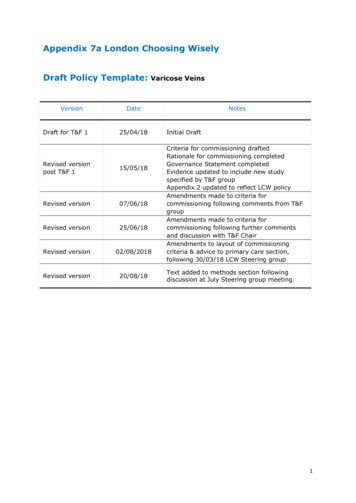
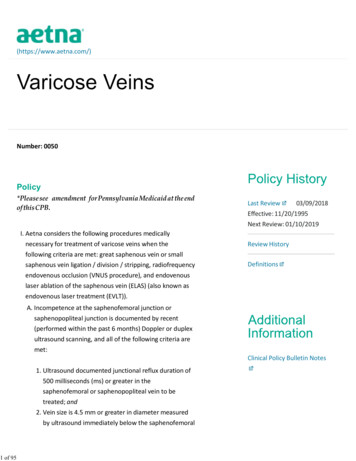
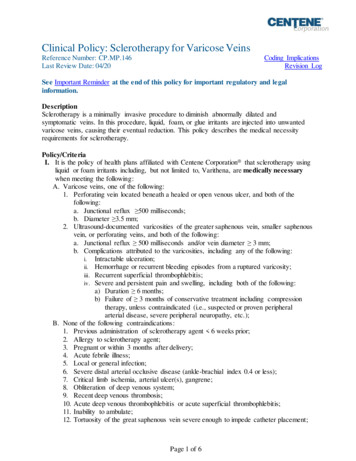

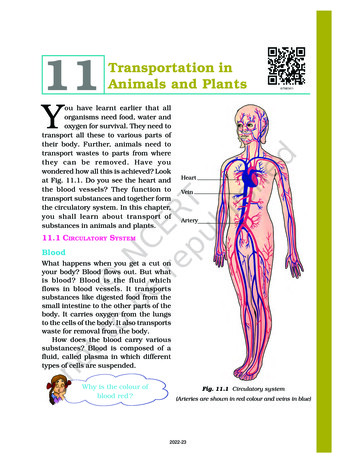
![Index [beckassets.blob.core.windows ]](/img/66/30639857-1119689333-14.jpg)
